Explore Xiangkhouang - Laos Travel, Asia
Nestled in the misty highlands of northern Laos, Xiangkhouang is a province where ancient legends meet living heritage. Home to the enigmatic Plain of Jars, Xiangkhouang invites travelers to step off the beaten path and uncover a land shaped by war, resilience, and timeless traditions. Whether you’re an explorer drawn to megalithic wonders, a cultural traveler seeking human connection, or a nature lover craving serene landscapes, Xiangkhouang promises something uniquely unforgettable.
Population: Approximately 278,000 in 2025.
Economy: Xiangkhouang’s economy is largely driven by agriculture, tourism, and small-scale trade. The fertile plains and cooler climate support many types of crops and livestock farming. In recent years, tourism has emerged as a growing sector, thanks to the Plain of Jars and eco-cultural experiences attracting both domestic and international travelers.
Landmarks: Famous for the Plain of Jars, Muang Khoun, and Tad Ka Waterfall.
Laos
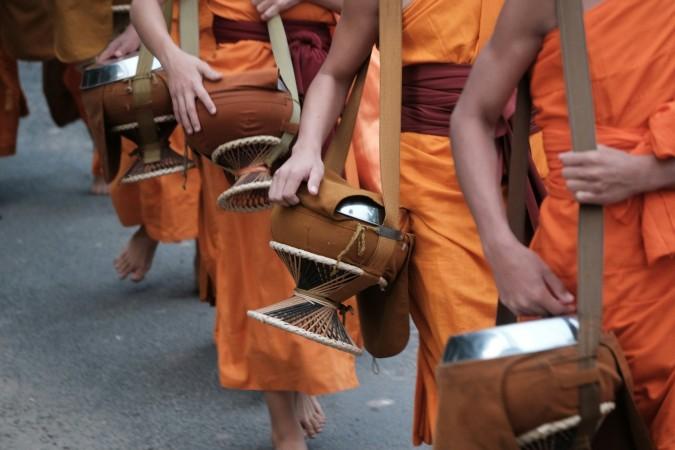
Overview of Xiangkhouang
History & Cultural Influence
Xiangkhouang’s history is both mythical and deeply real. At the heart of it lies the world-famous Plain of Jars, a sprawling archaeological wonder made up of thousands of massive stone jars scattered across the landscape. Believed to be over 2,000 years old, these monolithic relics hint at a long-lost civilization whose burial and ceremonial practices remain a mystery to this day.
In the 20th century, the province became one of the most heavily bombed areas during the Secret War in Laos, a dark chapter that left behind unexploded ordnance (UXO) and stories of resilience. Today, institutions like the UXO Information Center in Phonsavan help educate visitors on this history while honoring the lives affected.
Interaction with the Locals
One of Xiangkhouang’s most rewarding experiences lies in authentic interaction with its people. The province is home to several ethnic minority groups, including the Hmong, Khmu, and Tai Phuan, each with its own language, dress, and customs. Visitors often have the chance to participate in village life, whether through a guided homestay or spontaneous invitation over a meal of sticky rice and herbal tea.
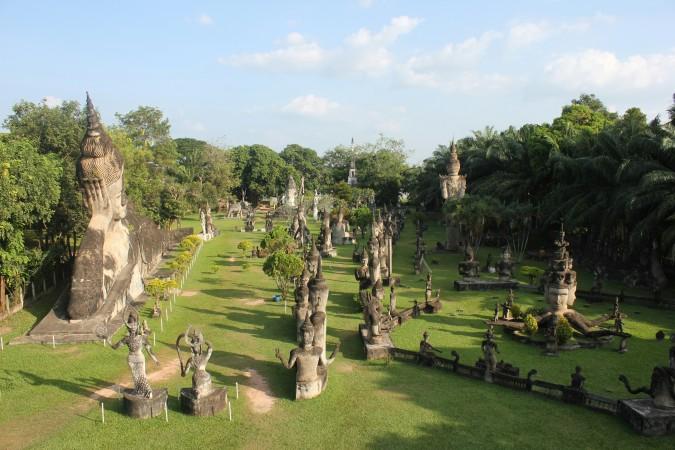
Top Attractions in Xiangkhouang
Plain of Jars – Sites 1, 2, and 3
The Plain of Jars is the crown jewel of Xiangkhouang. Spread across more than 90 locations, this vast archaeological site features thousands of mysterious stone jars, some weighing several tons. Most travelers begin with Site 1, the largest and most accessible, followed by the quieter Site 2 and the hilltop views of Site 3.
Each site offers a different feel: Site 1 for sheer scale, Site 2 for shaded serenity, and Site 3 for scenic rice paddies and trails. Guided tours are available and highly recommended to uncover the history, legends, and the ongoing UNESCO preservation efforts.
UXO Information Center
A visit to Xiangkhouang isn’t complete without understanding its more recent past. The UXO (Unexploded Ordnance) Information Center in Phonsavan is run by MAG (Mines Advisory Group) and offers a powerful look into the legacy of the Secret War.
Through photos, short films, and personal accounts, you’ll learn how the province is still recovering from heavy bombings during the Vietnam War era. The center supports bomb clearance and survivor aid programs; your visit directly contributes to awareness and education.
Muang Khoun – The Lost Capital
Once the royal seat of the Phuan Kingdom, Muang Khoun offers a glimpse into the past, with its colonial charm and spiritual calm. Although much of it was destroyed during the war, you can still visit the That Foun Stupa, a 30-meter-high Buddhist relic with a gaping hole left by treasure hunters, and the ruins of old temples like Wat Phia Wat, where a bomb-scarred Buddha statue still sits in peace. The town, located about 30 km from Phonsavan, is perfect for a day trip filled with quiet ruins and powerful stories.
Tad Ka Waterfall
For nature lovers, the Tad Ka Waterfall offers a refreshing escape. Located in a forested area outside Phonsavan, this hidden gem requires a bit of trekking but rewards visitors with a peaceful cascade surrounded by thick greenery. Bring good shoes, a picnic, and your camera because the views are worth the effort.
Hot Springs at Baw Nyai and Baw Yai
Warm up in the natural hot springs of Baw Nyai or Baw Yai, both popular among locals for their relaxing properties. The springs are located in rural settings, offering a calming experience away from the usual tourist trails. Some spots even have basic bathing huts and picnic areas, perfect for a slow afternoon.
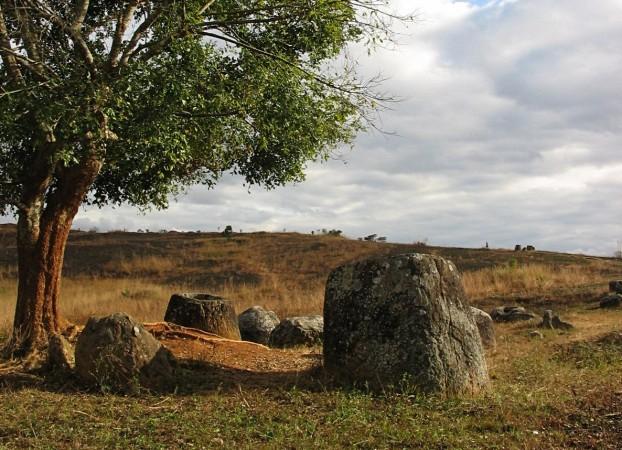
Must-Try Dishes in Xiangkhouang
- Or Lam: A signature dish from northern Laos, Or Lam is a slow-cooked stew made with buffalo meat, wild eggplant, wood ear mushrooms, and local herbs. A peppery vine called sakhaan is used for its numbing effect, like Szechuan pepper, Lao-style.
- Sai Oua: Fragrant and juicy, Sai Oua is packed with minced pork, lemongrass, kaffir lime, and chili. It’s grilled over charcoal and best eaten with sticky rice and spicy dipping sauce. Some ethnic villages make their own unique versions, especially during New Year festivals.
- Khao Piak Sen: Comfort in a bowl. This thick rice noodle soup is flavored with chicken or pork broth and topped with fried garlic, fresh herbs, and chili oil. You’ll find it at morning markets across Phonsavan—often eaten before sunrise by locals.
- Ping Gai: Simple, smoky, and satisfying. Ping Gai is grilled chicken marinated in fish sauce, lemongrass, and garlic. It’s a popular item at night markets and roadside stalls, often eaten on the go with jeow (dipping sauce) and sticky rice.
- Khao Niew: The heart of Lao cuisine. Steamed in bamboo baskets, Khao Niew is eaten by hand and pairs with every meal. In Xiangkhouang, sticky rice also holds ceremonial significance and is often shared during festivals and community gatherings.
- Local Herbal Teas & Lao-Lao Whiskey: After a meal, locals often serve mulberry tea or lemongrass tea, both soothing and full of antioxidants. For something stronger, try Lao-Lao, a homemade rice whiskey served during celebrations and family meals.
- Tam Mak Hoong: Fresh, fiery, and fermented. Tam Mak Hoong is the Lao version of papaya salad, made with shredded green papaya, fish sauce, chili, lime, and fermented crab or anchovy paste. It’s sour, spicy, and a true local favorite.
- Mok Pa: A soft, fragrant fish dish cooked with herbs like dill and galangal, wrapped in banana leaves and steamed until tender. Often served at family meals and ceremonial events. Light, healthy, and full of aroma.
- Khao Jee: A nod to Laos’ French colonial past, Khao Jee is a baguette filled with pork pate, chili paste, herbs, and pickled vegetables. In Phonsavan, street vendors add their own twist, sometimes using buffalo meat or local sausage.
- Larb Ped: Larb is the national dish of Laos, and in Xiangkhouang, duck larb is particularly beloved. Minced duck meat is mixed with mint, toasted rice powder, lime juice, and fish sauce. It’s spicy, crunchy, and perfect with sticky rice.
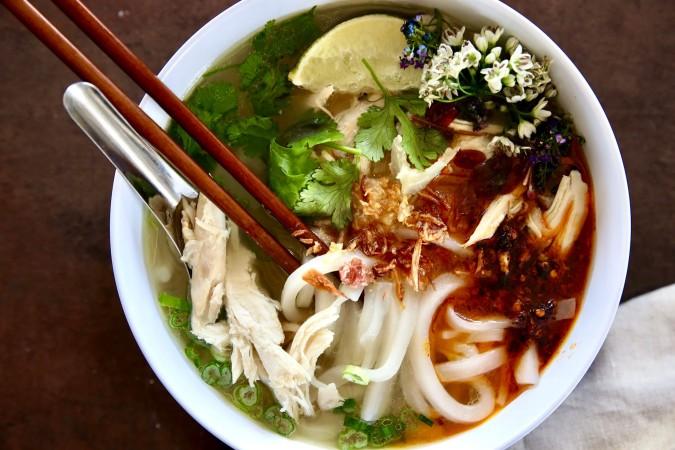
Festivals & Local Celebrations
Hmong New Year Festival (November – January)
The most iconic celebration in Xiangkhouang is the Hmong New Year, held between late November and early January, depending on the lunar calendar. This festival is not only a spiritual reset but also a time for courtship, family reunions, and showcasing Hmong identity.
Locals dress in vibrant traditional outfits adorned with silver jewelry. There are ball-tossing games (pov pob) between young men and women, live music, food stalls, and performances of traditional dances. If you're invited to a Hmong home during the festival, expect a warm welcome and a hearty feast.
Pi Mai Lao (Lao New Year – Mid-April)
Pi Mai Lao, or the Lao New Year, is celebrated nationwide in mid-April and brings three days of water, blessings, and celebration. In Xiangkhouang, the festivities are more community-focused and spiritual than in larger cities like Luang Prabang or Vientiane.
Locals pour scented water on Buddha images and elders to show respect and cleanse away bad luck. You might also get gently splashed with water in town—a symbol of purification and renewal. Expect temple visits, traditional music, and lots of sticky rice cakes.
Boun Khao Padap Din (Rice Planting Festival – August)
Held during the rainy season, this ancestral offering festival is observed in rural villages and temples across Xiangkhouang. Locals prepare offerings of food, incense, and flowers to honor deceased relatives and ask for blessings for a fruitful rice harvest. Ceremonies often involve almsgiving, chanting monks, and communal meals. Though less tourist-oriented, respectful travelers can observe or participate if invited by a local host.
Candlelight and Temple Festivals (Throughout the Year)
Throughout the year, smaller Buddhist festivals are celebrated at local temples (wats) in Xiangkhouang. These include Boun Khao Phansa (marking Buddhist Lent) and Boun Ok Phansa (its conclusion), often observed with candle processions, meditation, and flower offerings. While not flashy, these quiet moments provide insight into the spiritual fabric of Lao life—a peaceful contrast to the more festive events.
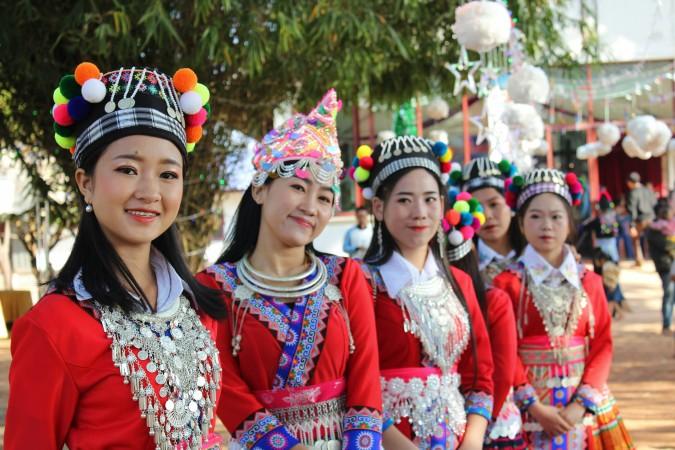
What to Do in Xiangkhouang
- Explore the Plain of Jars on Foot or By Bike: The best way to experience the Plain of Jars is to get out of the car. Many travelers opt to trek between Sites 1, 2, and 3 or cycle across the scenic countryside, guided by local experts. Along the way, you’ll see farmers in the fields, grazing buffalo, and quiet villages—all adding life to the ancient landscape.
- Go on a UXO Educational Tour: Join a guided UXO tour through MAG (Mines Advisory Group) to learn about the impact of the Secret War and efforts to clear unexploded bombs. These tours are both eye-opening and ethically important, allowing visitors to better understand Xiangkhouang’s resilience.
- Try Your Hand at Traditional Hmong Weaving: Several villages near Phonsavan offer hands-on experiences in Hmong or Tai Phuan textile arts. Learn how to spin thread, use natural dyes, and weave on a backstrap loom. These workshops support local artisans and preserve ancestral skills.
- Cycle to Rural Villages: Rent a bicycle and follow trails into the hills. You’ll pass rice terraces, pine forests, and bamboo groves. Some routes include stops at temples, caves, and waterfalls, as well as inviting tea stops where locals welcome travelers with smiles and stories.
- Meditate at a Local Temple: Visitors seeking quiet reflection can join early morning chanting sessions or meditation retreats at Buddhist temples. These are informal and welcoming to non-Buddhists as long as basic etiquette is followed.
- Take a Day Trek to Tad Ka Waterfall: For adventure seekers, a trek to Tad Ka Waterfall offers both exercise and a peaceful nature retreat. Most treks start with a scenic drive, followed by a forest hike and a refreshing dip in natural pools.
Shopping in Xiangkhouang
- Hmong Embroidered Textiles: Hmong embroidery is known for its intricate and vibrant geometric patterns and symbolic designs. Seek out hand-stitched cushion covers, bags, and ceremonial sashes created by women from nearby villages. Additionally, many vendors offer fabrics dyed naturally with local plants.
- Silver Jewelry and Amulets: Ethnic silver jewelry is widely worn during festivals, and you can find handmade earrings, necklaces, and talismans in markets or craft cooperatives. Some designs represent ancestral protection, while others are purely decorative.
- Tai Phuan Silk & Cotton Weaves: Tai Phuan artisans are renowned for their exquisite silk weaving, particularly in the creation of temple offerings and traditional skirts (sinh). Visit village workshops to see the weaving process and purchase directly from the makers.
- Organic Products (Honey, Herbal Tea & Spices): Phonsavan’s countryside is rich in natural produce. Look for wild forest honey, lemongrass tea, dried galangal, and other herbal goods often packaged sustainably by women’s cooperatives.
- Handmade Toys and Bamboo Crafts: From woven animal figures to bamboo baskets and hand-carved whistles, small toys and home goods made in the villages make great gifts, especially for children or decor lovers.
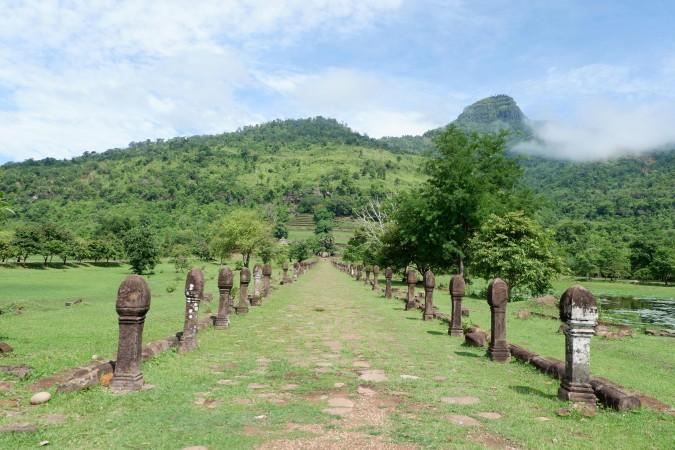
Weather in Xiangkhouang: Best Time to Visit
Dry Season in Xiangkhouang(November to April)
The dry season is the most popular time to visit Xiangkhouang. With sunny skies, low humidity, and average daytime temperatures ranging from 15°C to 25°C, this period offers ideal weather for sightseeing, trekking, and cultural exploration. December and January can be quite chilly in the early morning and at night, with temperatures occasionally dropping below 10°C, so packing layers is recommended.
Rainy Season in Xiangkhouang (May to October)
During the wet season, monsoon rains arrive, bringing lush greenery and dramatic landscapes. While afternoon showers are common, they are often short-lived. Roads may become muddy, particularly in rural areas, so travelers should plan accordingly. The average temperature remains mild, hovering around 20°C to 27°C.
Best Time to Visit Xiangkhouang
For clear skies, cooler temperatures, and access to outdoor adventures like visiting the Plain of Jars or exploring local villages, December through February is considered the best travel window. This period also aligns with key cultural festivals, adding deeper immersion into local life.
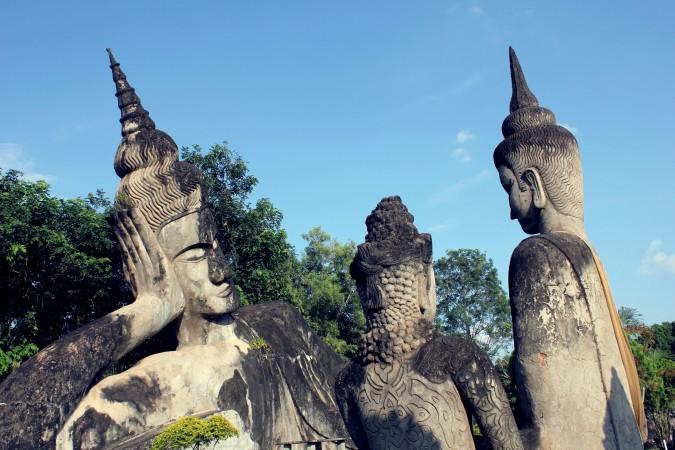
Essential Travel Information
Getting Around Xiangkhouang
- Tuk-tuks and Jumbos: These three-wheeled motorized vehicles are readily available in Phonsavan and ideal for short trips or city sightseeing. Prices should be agreed upon in advance.
- Rental Motorbikes and Bicycles: Adventurous travelers can rent motorbikes or bicycles to explore the plateau at their own pace. Helmets and caution are advised due to occasional rough roads.
- Private Cars or Vans: Hiring a car with a driver is a popular option for visiting more remote attractions like Muang Khoun or the multiple Plain of Jars sites. It allows flexibility and comfort, especially for groups or families.
- Buses and Minivans: Public transportation is available for travel between provinces. However, services can be infrequent and slow, so checking schedules in advance is recommended.
ATM & Banking Services
- ATM Access: ATMs are available in central Phonsavan and near major hotels, banks, and the airport. They support most international debit and credit cards, including Visa and MasterCard. However, transaction fees and withdrawal limits may apply, so it’s wise to plan ahead.
- Currency: The local currency is the Lao Kip (LAK), though Thai Baht and US Dollars may be accepted in some places. Always carry smaller denominations for purchases at rural markets and local stalls.
- Banking Hours: Most banks operate from 8:30 AM to 3:30 PM, Monday to Friday. Some offer currency exchange services as well.
- Mobile Payments: While gaining popularity in urban Laos, mobile payment options like QR code scanning and e-wallets are not widely used in Xiangkhouang yet. It’s best to keep some cash on hand, especially when exploring remote villages or attractions.
- Safety Tip: Avoid using ATMs at night in less-populated areas and always store cash securely.
Where to Stay in Xiangkhouang
- Guesthouses & Eco-Lodges: These are ideal for travelers seeking authentic cultural experiences. Family-run guesthouses often include home-cooked meals and local insight. Eco-lodges around the countryside offer stunning mountain views, peaceful surroundings, and sustainable practices.
- Mid-range Hotels: Phonsavan hosts several clean and well-equipped hotels, often featuring Wi-Fi, hot showers, and on-site dining. Some accommodations even provide tour booking services, bicycle rentals, or connections to Plain of Jars excursions.
- Homestays: For a more immersive stay, try a village homestay experience. You’ll sleep in traditional wooden homes, participate in daily routines, and learn local customs, ideal for cultural travelers and ethical tourism enthusiasts.
Articles for you

Explore Yala National Park - Sri Lanka Travel, Asia
Tucked away in Sri Lanka’s southeastern corner, Yala National Park is where wild nature meets deep tradition. Known worldwide for its leopard population, the park is also home to elephants, sloth bears, crocodiles, and hundreds of bird species. Beyond wildlife, Yala opens doors to a cultural landscape dotted with ancient temples, Buddhist ruins, and coastal villages. For travelers seeking more than just a safari, Yala offers a chance to explore eco-tourism, local communities, and sacred heritage sites.
Population: The Yala National Park area doesn’t have a human population.
Economy: The economy around Yala National Park thrives on a blend of eco-tourism, agriculture, and local services. Safari tours, eco-lodges, and cultural experiences drive steady income for nearby towns like Tissamaharama and Kataragama, supporting thousands of families.
Landmarks: Famous for Block I of Yala and wildlife encounters, including elephants, sloth bears, crocodiles, and exotic bird species.

Explore Galle - Sri Lanka Travel, Asia
Nestled on Sri Lanka’s southern coastline, Galle is a vibrant city where history meets the sea. Its cobbled streets, colonial architecture, and serene beaches make it a must-visit destination for travelers seeking a blend of culture, adventure, and relaxation. A UNESCO World Heritage site, Galle captivates visitors with its Dutch Fort, bustling markets, and friendly locals. Whether you’re exploring the ramparts at sunset or savoring fresh seafood by the shore, Galle promises an unforgettable journey into Sri Lanka’s heritage.
Population: Approximately 113,000 in 2023.
Economy: Galle’s economy thrives on tourism, trade, and fisheries. The city’s historic fort, colonial architecture, and coastal charm draw thousands of international visitors each year, making tourism its main economic driver. Fishing remains vital for local livelihoods, supplying fresh seafood across the region.
Landmarks: Famous for the Galle Fort, Dutch Reformed Church & Maritime Museum, and Unawatuna Beach.

Explore Bentota - Sri Lanka Travel, Asia
Nestled along Sri Lanka’s southwestern coast, Bentota is a tropical paradise that blends golden beaches, vibrant culture, and thrilling adventures. Famous for its calm waters, luxury resorts, and scenic river estuary, Bentota has become a top destination for travelers seeking both relaxation and authentic experiences. From serene beach walks at sunrise to adrenaline-pumping water sports, this coastal town offers a perfect balance of leisure and exploration. With its proximity to Colombo and Galle, Bentota is easy to reach, making it an ideal stop for both short escapes and extended holidays.
Population: Approximately 37,000 in 2023.
Economy: Bentota’s economy thrives mainly on tourism, which drives local businesses such as hotels, restaurants, and wellness retreats. The town also benefits from fishing, coconut cultivation, and handicrafts like wood carving and batik textiles. Many residents rely on the growing demand for water sports and Ayurvedic treatments, making tourism the backbone of both income and employment in the area.
Landmarks: Famous for Bentota Beach, Bentota River Safari, and Kande Vihara Temple.

Explore Mirissa - Sri Lanka Travel, Asia
Mirissa is a charming coastal town on Sri Lanka’s southern shoreline. Known for its golden beaches, turquoise waters, and vibrant marine life, it has become a must-visit stop for travelers exploring the island. Many come for whale watching, surfing, and sunset views at Coconut Tree Hill, but Mirissa offers much more than postcard beauty. The fishing boats you see anchored by the bay carry generations of stories. Local traditions, delicious cuisine, and a laid-back rhythm of life shape every visitor’s experience.
Population: Approximately 4,700 in 2023.
Economy: Mirissa’s economy is largely shaped by its coastal location. Fishing has long been the backbone of local livelihoods, with generations relying on the Indian Ocean for income. In recent decades, tourism has become the main driver of growth, thanks to whale watching, surfing, and beachside hospitality.
Landmarks: Famous for Mirissa Beach, Coconut Tree Hill, and Parrot Rock Bridge.

Explore Nuwara Eliya - Sri Lanka Travel, Asia
Tucked away in the Central Highlands of Sri Lanka, Nuwara Eliya is often called “Little England”. With its rolling tea plantations, cool misty mornings, and colonial charm, this mountain town feels like a step into another world. Travelers come here to breathe fresh air, walk through flower gardens, sip the finest Ceylon Tea, and enjoy a pace of life far from the island’s busy cities. Whether you’re drawn by scenic landscapes, heritage architecture, or the warmth of its people, Nuwara Eliya is a destination that blends nature, culture, and history in perfect harmony.
Population: Approximately 781,000 in 2023.
Economy: Nuwara Eliya’s economy thrives mainly on tea production, as it sits in the heart of Sri Lanka’s central highlands, famous worldwide for Ceylon Tea. The city also benefits from a growing tourism industry, attracting visitors with its colonial charm, cool climate, and scenic landscapes.
Landmarks: Famous for Gregory Lake, Hakgala Botanical Garden, and Victoria Park.

Explore Sukau - Malaysia Travel, Asia
Nestled on the banks of the Kinabatangan River in Sabah, Malaysian Borneo, Sukau is a destination where wildlife, culture, and conservation come together. Known as one of Asia’s top spots for river safaris and eco-tourism, this quiet village offers a front-row seat to encounters with Bornean orangutans, pygmy elephants, proboscis monkeys, and exotic birdlife.
Population: Approximately 1,400 in 2019.
Economy: Sukau’s economy is shaped by its riverine location and natural resources. Traditionally, the Orang Sungai community relied on fishing, small-scale farming, and forest gathering for their livelihood. Today, the village has shifted toward eco-tourism, with river cruises, jungle trekking, and homestays providing income.
Landmarks: Famous for the Kinabatangan River cruises, Gomantong Caves, and Ox-bow lakes and wetlands.
